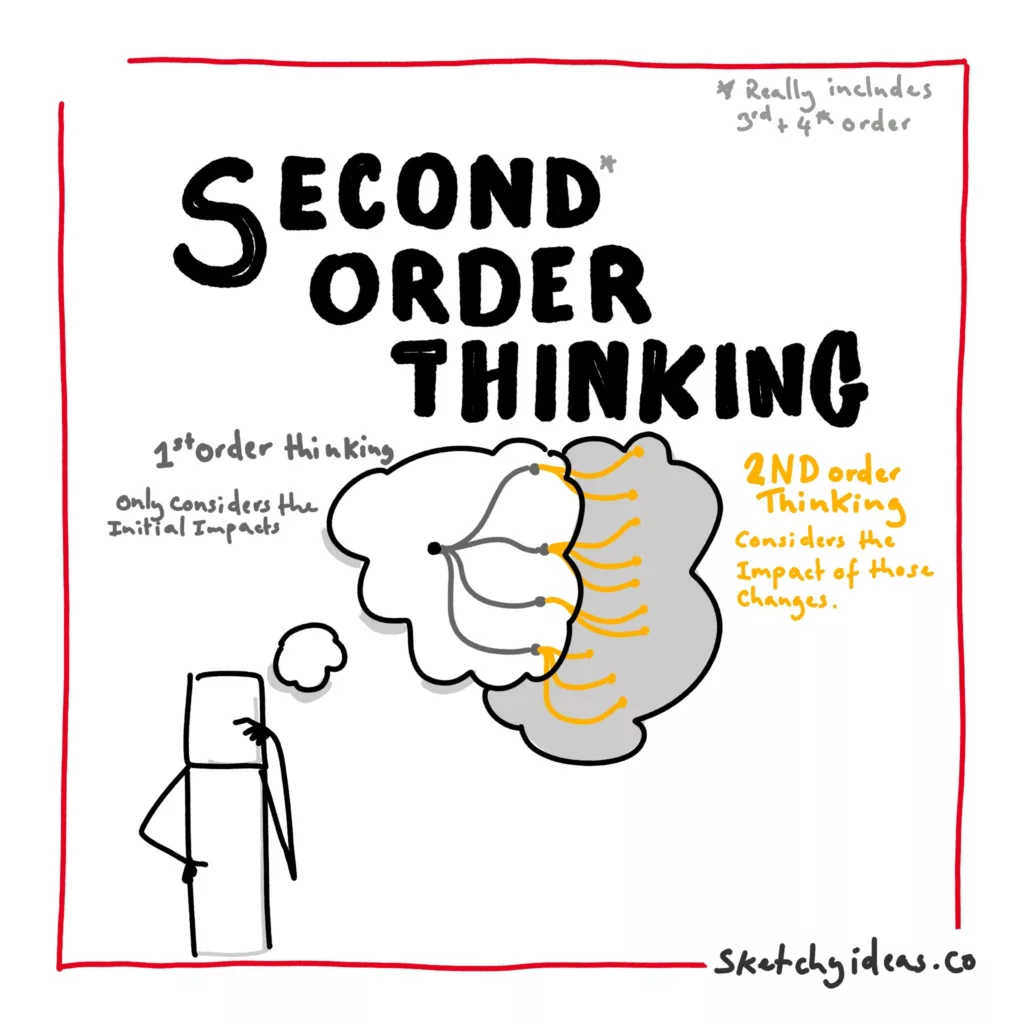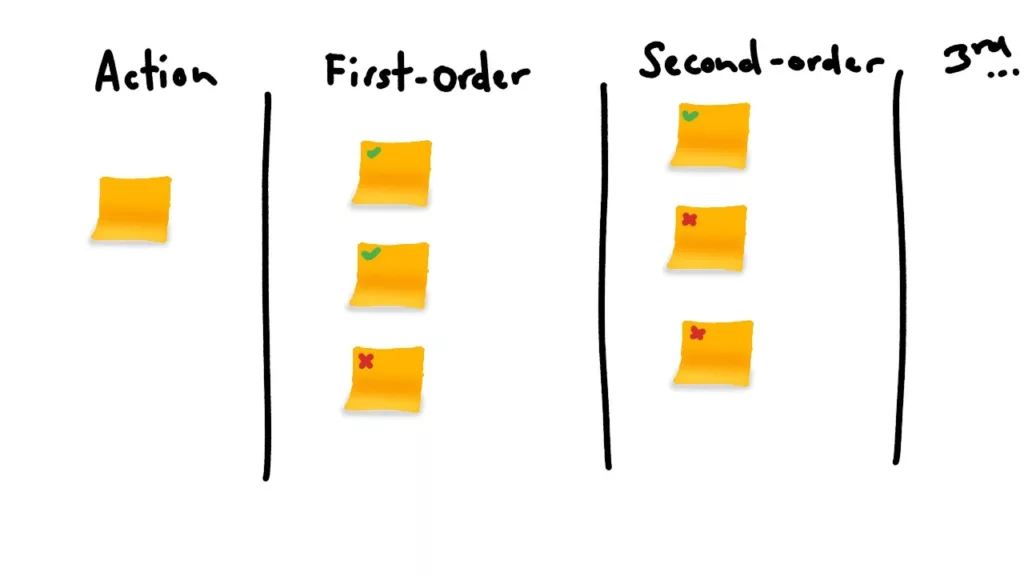Second order thinking is a critical mental model that can significantly improve decision-making and lead to better outcomes.
Making good decisions is crucial to success in life, yet many of us struggle to make the right choices. While most people consider the immediate consequences of their actions, this isn’t always enough to guarantee positive outcomes. That’s where second order thinking comes in. By considering the potential ripple effects of our decisions, we can avoid unintended negative consequences and identify opportunities that may not be immediately apparent.
Adopting a second order thinking approach can significantly improve the quality of our decision-making.

What It Second order thinking?
Second order thinking is a mental model where we consider the potential future consequences of our actions beyond the immediate and obvious ones.
This is different from first order thinking where we only consider the immediate or direct effect of a decision. Although the name “Second order thinking” suggests thinking about the immediate ripple effects, it is usually a short hand that includes further knockon effects and not merely the next.
Second order thinking isn’t just personal — it includes anticipating how others will react to our decisions and their concequences down the line.
Why it matters
Second order thinking is essential because it helps us avoid potential negative consequences that we may not have considered.
When we adopt first order thinking we tend to focus on the possible benefits and advantages of a decision. This can make us blind to the negative consequences that can cause more problems down the line.
But it’s not just about negative consequences.
It also allows us to identify opportunities that may not be immediately apparent. This makes second order thinking particularly valuable in complex systems where a small action in one area can lead to significant consequences elsewhere.
By considering the potential ripple effects of our decisions, we can make more informed choices and minimise the risks of unintended negative outcomes.
How to adopt it in your day-to-day life
Okay, so you’re onboard with second order thinking but how do you actually employ it? Here’s four simple ways.
Play the “and then what?” game:
This involves continually asking yourself, “If I do this, what will happen next?” Try to visualise as many potential consequences as possible. For example, if you’re considering quitting your job, think about the potential ripple effects that decision could have on your career, relationships, and finances.
Consider everyone your actions affect:
Your decisions and actions don’t just affect you.
They will affect other people in small and significant ways. So when you make decisions, take a moment to consider everyone they might affect, including coworkers, family members, customers, and the broader community.
Consider how each group might react to your decision and how those reactions could affect the outcome.
Seek out different perspectives:
Your own perspective is limited.
To adopt second order thinking, you need to see from other people’s perspectives. This means actively listening to feedback, considering the viewpoints of those who may be affected, and seeking out diverse opinions.
By considering other perspectives, you’ll see more consequences than on your own.
Learn from your mistakes:
You’ll never manage to predict every consequence.
But if you have a willingness to learn from your mistakes, you’ll be better equipped for the future. When things don’t go as planned, take the time to reflect on why that happened and what you could have done differently.
Use those insights to inform your decision-making in the future.
Bonus: Use a visual template
Visual frameworks can help guide our thinking including helping us to employ second order thinking.
If you have a whiteboard, piece of paper or digital whiteboard you can visualise the possible consequences of your actions before you make a big decision.
Try the example below.

Don’t make the same mistake as the US government
In the 1980s, the US government armed and trained a rebel force fighting against the USSR for their country.
Decades later people connected to that same force hijacked civilian airplanes and flew them into the World Trade Centre in New York. They were, of course, the Taliban. While few could have predicted this exact outcome of events, it is a useful lesson in how our actions can bring non-immediate negative consequences.
Second order thinking is a powerful tool to help avoid these pitfalls. Use it or you’ll soon regret it.

Leave a Reply